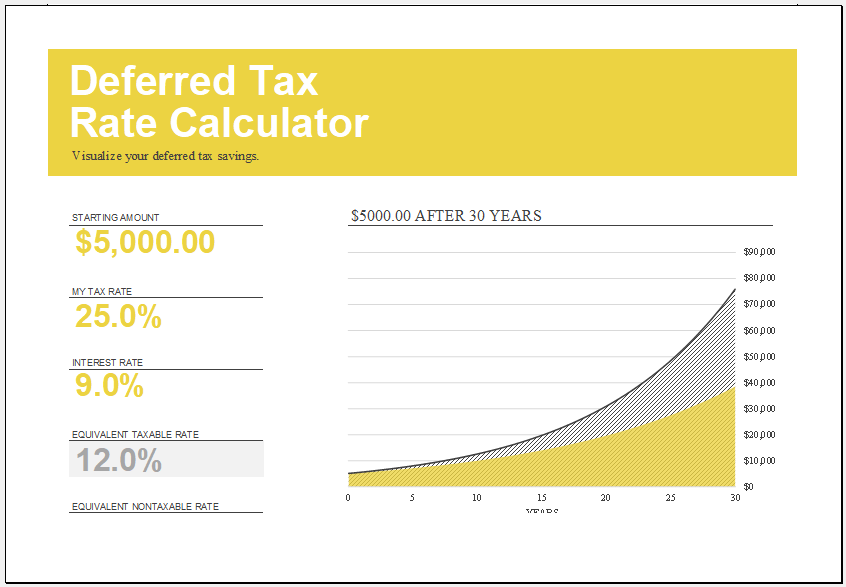Deferred Tax Rate Calculator
What is deferred tax?
A deferred tax causes a reduction in the person’s taxable income. The person must calculate the deferred tax when he pays it more than required. There are some pending payments that an Internal Revenue Service is required to pay.
The situation of deferred taxes occurs when there are a lot of tax expenses. Sometimes, there is a vast difference between the business’s revenue and the taxable revenue receipt. There is limited taxation on the revenue generated by any business. Since taxation is an application of the revenue, the company should be able to recognize its revenue.
Why is deferred tax calculation necessary?
The deferred tax is significant because it is one of the most critical accounting parameters. The effect of the tax on the revenue can be determined using a deferred tax calculator.
How do you calculate the deferred tax?
To calculate the deferred tax, you should know the rules that must be followed to reach accurate and precise results. Here, we will give step-by-step instructions to help you quickly calculate deferred taxes.
- Make a table and note all the assets and liabilities in two columns. It would be best to mention your liabilities as unfavorable and assets as positive numbers. Ensure that you consider the equity accounts to ensure that your calculations don’t stay incomplete because of missing anything important. It should be kept in mind that the total of all the values added to the table should be zero. This is the best way to ensure the correctness of the record.
- For each asset and liability, calculate the tax base. In the case of assets, the tax base is an amount that is deductible for the tax. Regarding liabilities, the tax is a carrying amount deductible for future tax purposes based on liabilities.
- Calculate all the taxable temporary differences. The temporary tax differences can be either negative or positive.
- When all the assets and liabilities are considered, the deferred tax applies to this period, and the tax rate is determined.
- Calculate the deferred tax on assets and liabilities. The taxable temporary differences are negative if deferred tax liabilities rise. Similarly, the taxable temporary differences will be calculated to be positive if the calculations show a rise in deferred tax assets.
- If there is anything that you have not included while making calculations, add it at the end of the calculation process and repeat the calculation.
Deferred tax rate calculator template:
The deferred tax rate calculator is an excellent tool for people who don’t know how to calculate the deferred tax rate. This calculator calculates everything accurately and ensures it does not mislead you with wrong or inaccurate results.
Preview
Format: MS Excel [.xlsx] 2007/2020
- Business Startup Cost Estimator
- Home Construction Cost Estimator
- Kitchen Remodel Budget Calculator
- Personal Assets and Debts Calculator
- Power Consumption Calculator
- Payroll Calculator Template for Excel
- Food Fat Percentage Calculator Template
- Total Cost of Ownership Calculator Template
- Real Estate Commission Calculators
- Retirement Calculators
- Vehicle Loan Payment Calculator
- Year-end Tax Planning Calculator
- Sale Probability Assessment Calculator
- Travel Expense Calculators
- Sales Commission Calculators
- Mortgage Loan Calculator
- Simple Loan Calculator
- Net Present Value Calculator
← Previous Article
Kitchen Remodel Cost CalculatorNext Article →
Life Insurance Needs Calculator